Big doesn’t mean better. Small doesn’t mean weak. And in the garden? Native means magic. These plants have been here longer than your garden gloves. They know the soil. They know the sun. And they throw a party for pollinators without asking for constant attention. From knee-high charmers to skyward showstoppers, these ten native beauties bring color, character, and a whole lot of buzz to your space. Forget the imports. This June, go local—your garden will thank you in bees, birds, and butterflies.
Eastern Red Columbine

In the dappled shade of the forest, the Eastern Red Columbine dances gracefully, its red and yellow blossoms fluttering like tiny skirts. This plant is a favorite among hummingbirds, drawing them in with its bright, tubular flowers and sweet nectar.
Standing about two feet tall, it’s a perfect choice for gardeners looking to add a splash of color and wildlife to their space. The Columbine’s charming appearance and adaptable nature make it a must-have for any native plant enthusiast.
Purple Coneflower
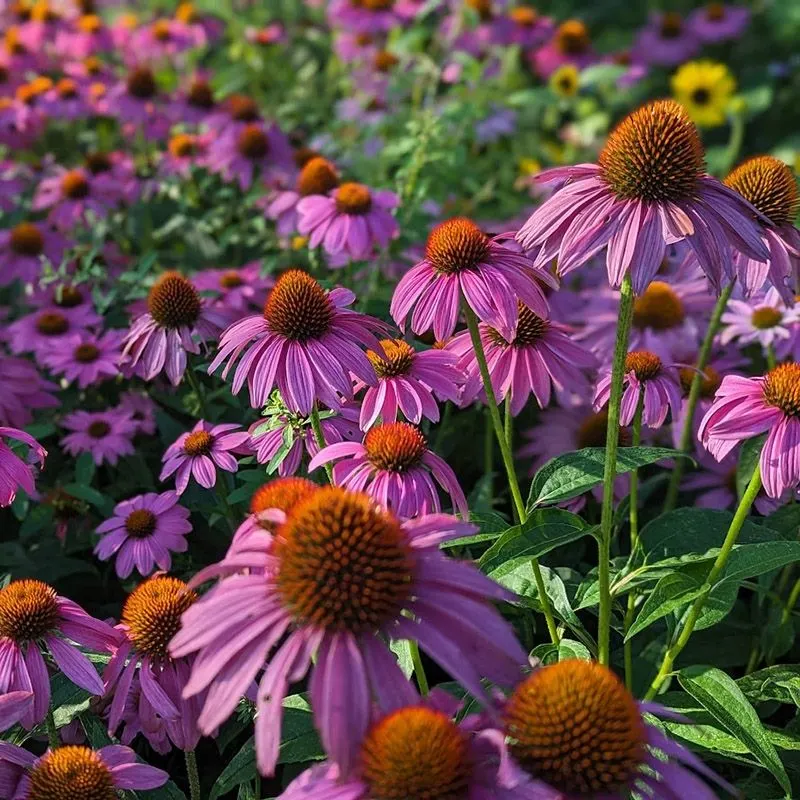
With its striking purple petals and golden centers, the Purple Coneflower stands as a beacon of summer beauty. This resilient perennial thrives in sunny spots, bringing vibrancy and life to any garden.
Pollinators such as bees and butterflies flock to its blooms, benefiting from its rich nectar throughout the season. Known for its medicinal properties, the coneflower also adds a touch of history to your garden, as it was traditionally used by Native Americans for its healing qualities.
Blue False Indigo
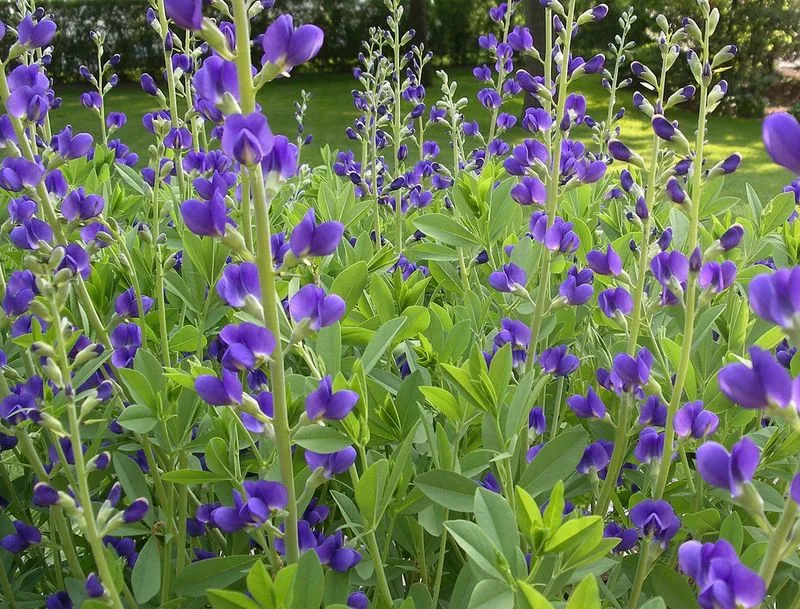
Blue False Indigo, with its deep blue blossoms, offers an enchanting visual spectacle in any garden setting. Its upright stature and multi-branched stems create a striking presence, complementing other native plants beautifully.
This legume not only adds nitrogen to the soil but also attracts a variety of pollinators with its appealing flowers. Native to the prairies, Blue False Indigo is a testament to the resilience and beauty of native plant species.
Wild Bergamot

Wild Bergamot, with its lavender blooms and aromatic leaves, offers a sensory delight for gardeners and wildlife alike. Often referred to as bee balm, this plant is a magnet for bees and butterflies, ensuring your garden buzzes with activity.
Its citrus-scented leaves can be used in teas, adding an extra layer of utility to its beauty. Whether growing wild or cultivated, Wild Bergamot brings a touch of wildflower magic to any garden.
Black-eyed Susan

Black-eyed Susans, with their radiant yellow petals and dark centers, are a classic addition to any garden. These cheerful flowers thrive in sunny conditions, offering bold color and texture throughout the summer.
A favorite among pollinators, they provide essential nectar and pollen for bees and butterflies. Their easy-going nature and minimal maintenance make them perfect for both novice and experienced gardeners alike.
Swamp Milkweed
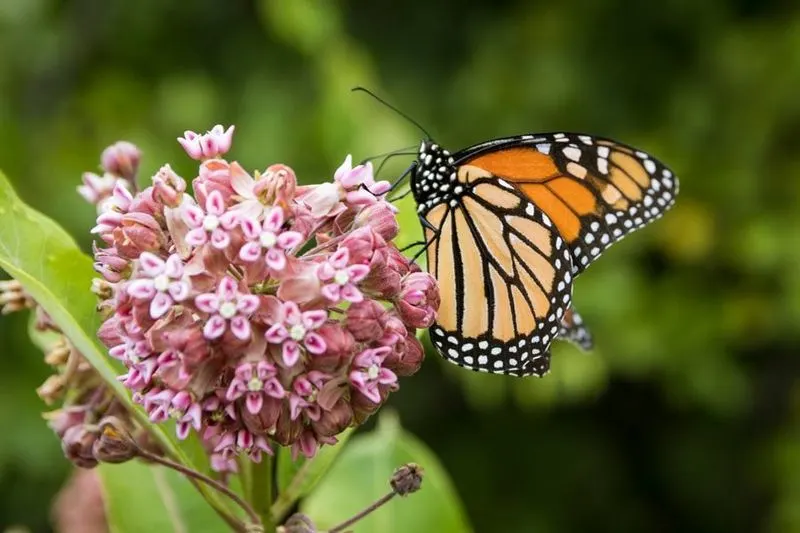
Swamp Milkweed, with its vibrant pink blooms, is a critical plant for supporting monarch butterflies. Its clusters of flowers provide essential nectar, while its leaves serve as a vital food source for monarch caterpillars.
Thriving in wet conditions, this plant is ideal for rain gardens or low-lying areas. Swamp Milkweed’s ecological importance and stunning appearance make it a valuable addition to any native garden.
New England Aster
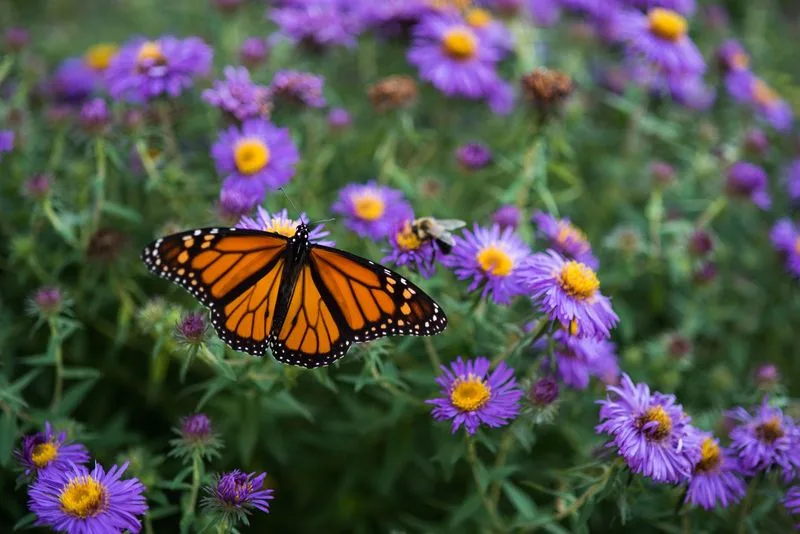
New England Aster, with its brilliant purple blooms and sunny yellow centers, adds a pop of color to the late summer and fall garden. This hardy perennial acts as a crucial nectar source for late-season pollinators, providing sustenance when other flowers are fading.
Its tall, sturdy stems and bushy growth make it a beautiful backdrop or border plant, fitting seamlessly into diverse garden designs.
Cardinal Flower
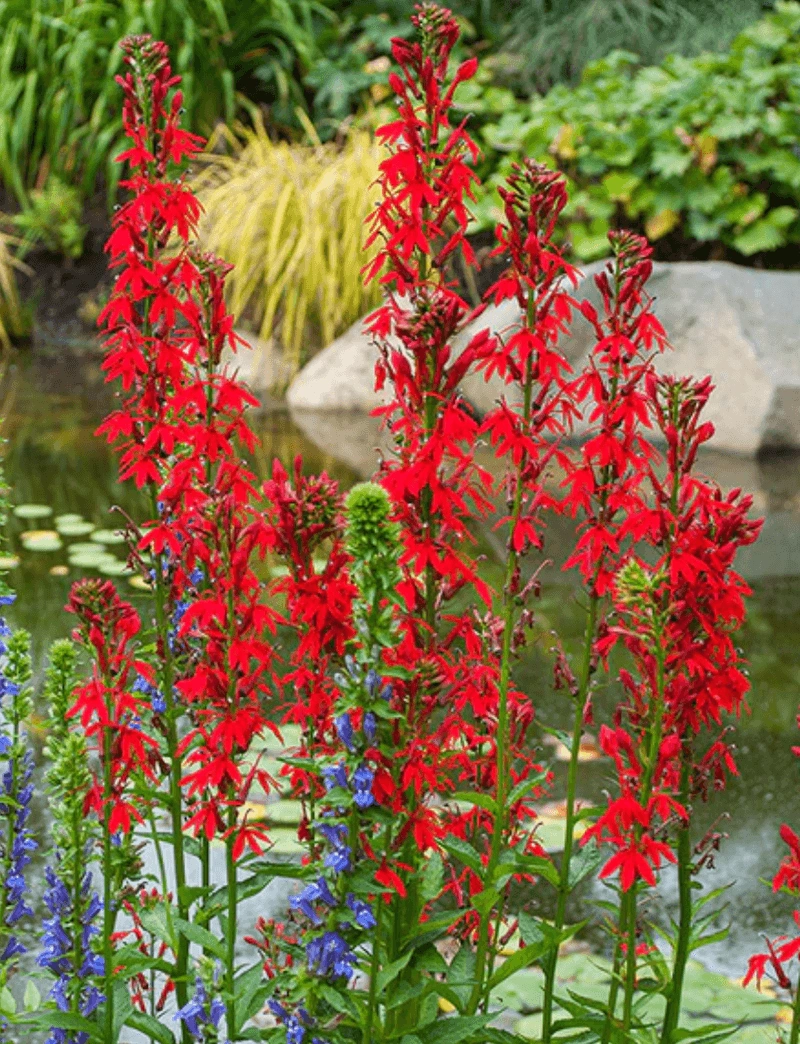
The Cardinal Flower dazzles with its vivid red blooms, standing as a striking statement along stream banks and wet areas. Its tall spikes and lush foliage create an impressive silhouette, while the flowers attract hummingbirds seeking nectar.
Thriving in moist conditions, the Cardinal Flower is a showstopper that adds elegance and vibrancy to garden spaces. Its ability to attract wildlife and tolerate wet areas makes it a versatile and valuable plant.
Goldenrod
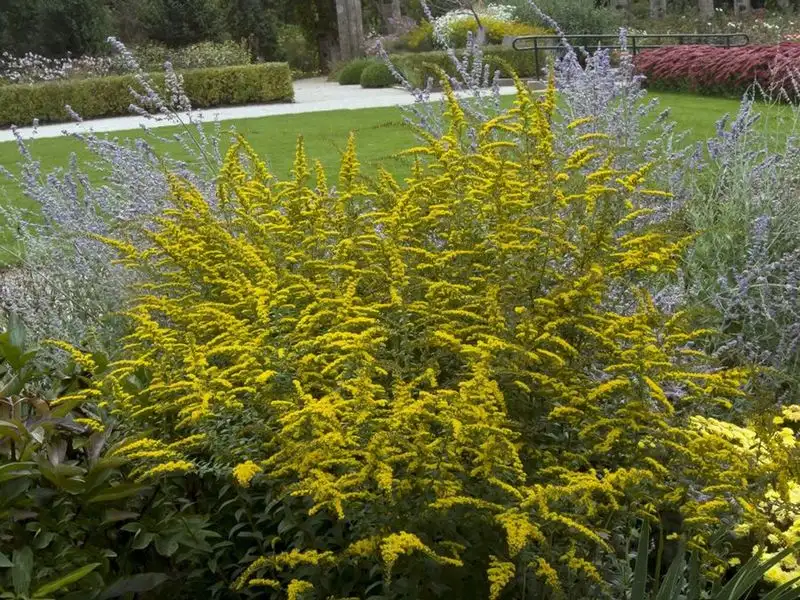
Goldenrod, often misunderstood, blooms with bright yellow plumes that sway gracefully in the breeze. Far from causing allergies, this native plant supports a wide range of pollinators by providing abundant nectar.
Its robust growth and adaptability make it perfect for naturalizing in meadows or wild gardens. Goldenrod not only enhances the garden’s aesthetic but also plays a vital role in the local ecosystem, supporting late-season pollinators.
Joe Pye Weed
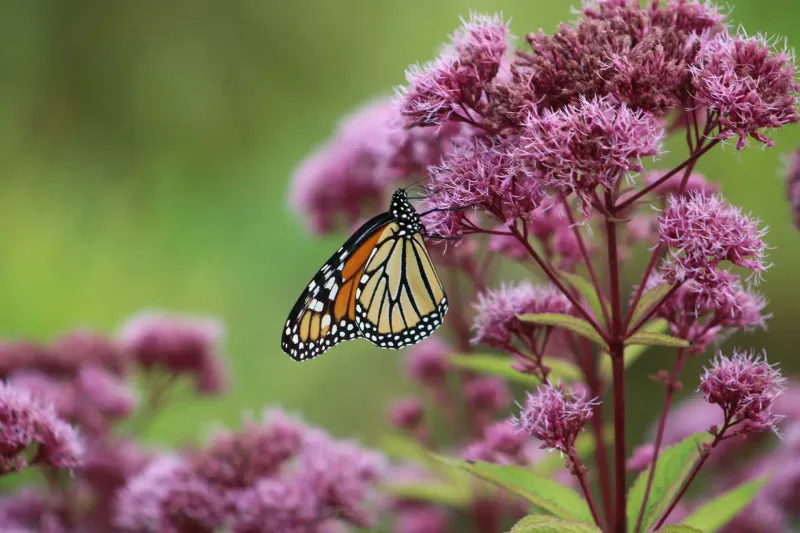
Joe Pye Weed towers with grace, its tall stems crowned by clusters of pinkish-purple flowers. This majestic plant is a butterfly magnet, offering ample nectar and high perches for resting.
Growing naturally in moist meadows, it’s perfect for adding vertical interest and wildlife support to larger garden spaces. Joe Pye Weed’s presence not only elevates the garden’s aesthetic but also its ecological value, making a meaningful impact in garden ecosystems.

